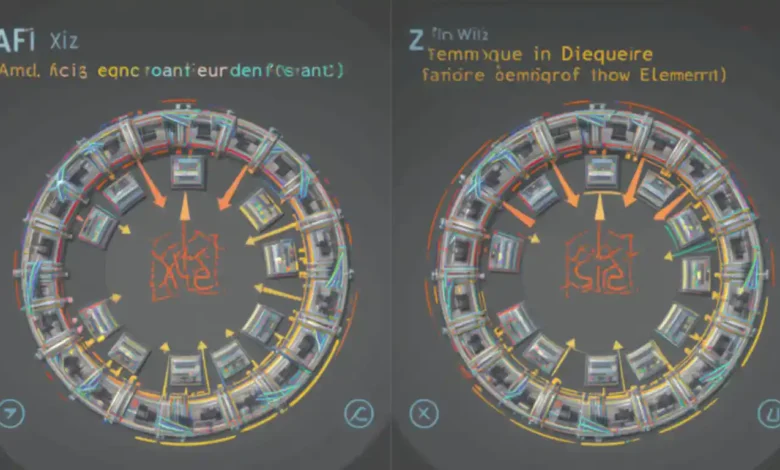The Fundamentals and Applications of Circular Queue in Data Structures

Introduction
Circular queues are an essential data structure, particularly useful in scenarios where a fixed-size, efficient, and FIFO (First In, First Out) type of data management is required. In this blog post, we will explore the concept of a circular queue in data structures, its applications, advantages, and how it stands out from other queue types.
What is a Circular Queue?
A circular queue is a linear data structure that follows the FIFO principle but differs from a regular queue as it connects the last position back to the first, forming a circle. This unique feature significantly enhances memory utilization, making the circular queue a go-to structure in systems with limited memory and real-time processing requirements.
How Does a Circular Queue Work?
Understanding the operation of a circular queue involves recognizing its key operations: enqueue (insert) and dequeue (remove). Items are added from the rear and removed from the front, and when the queue reaches its maximum capacity, it starts from the beginning if there are empty slots, thus forming a circle.
Key Features of Circular Queue
Circular queues are designed to optimize memory. The wrap-around connection at the end of the queue helps in reusing wasted storage space, which is a common issue in linear queues once elements are dequeued from the front.
Applications of Circular Queue
Circular queues are widely used in various applications such as CPU scheduling, traffic management, and buffering data streams. Their ability to efficiently manage data in a sequential manner makes them ideal for these purposes.
Implementing a Circular Queue
Implementing a circular queue typically involves setting up an array to store the elements and two pointers, front and rear, to track the ends of the queue. Proper management of these pointers ensures the circular nature of the queue and efficient data processing.
Circular Queue vs. Linear Queue
While both structures operate on the FIFO principle, the circular queue maximizes space by reusing freed positions, unlike the linear queue which may involve shifting elements or suffering from space underutilization once items are removed.
Advantages of Using a Circular Queue
The primary advantage of a circular queue is its efficiency in space utilization and system performance. It prevents the wastage of space typical of linear queues and reduces the need for frequent memory operations.
Challenges in Managing Circular Queues
Managing circular queues requires careful handling of the pointers to avoid issues such as overflow or underflow. Additionally, complexity in implementation can arise when trying to distinguish between a full queue and an empty one.
Circular Queue in Multitasking Environments
In multitasking computer systems, circular queues play a crucial role in managing various processes. They help in scheduling tasks and managing the workflow efficiently without requiring excessive memory reallocation.
Conclusion
Circular queues are a powerful tool in the arsenal of data structures, providing a robust solution for managing data in a sequential and efficient manner. Whether in computer applications, operating systems, or real-time processing, the circular queue offers a versatile approach to data management that is both space-efficient and performance-oriented.
FAQs
- What is the main advantage of using a circular queue over a linear queue?
The main advantage is the efficient utilization of space, as the circular queue minimizes wasted space by reusing freed slots.
- How do you differentiate between a full queue and an empty one in a circular queue?
This can be tricky; typically, a condition or an additional variable is used to keep track of the number of elements or the queue’s state to differentiate between full and empty statuses.
- Can circular queues be implemented using linked lists?
Yes, circular queues can also be implemented using linked lists, where the last node points back to the first node, creating a circular structure.
- What are some common applications of circular queues?
Circular queues are used in various applications like CPU scheduling, traffic management, and buffering in data stream management.
- Why are circular queues used in real-time processing?
Circular queues provide a continuous and efficient way to manage data queues without the need for extensive memory management, which is crucial in real-time processing environments where speed and efficiency are paramount.




